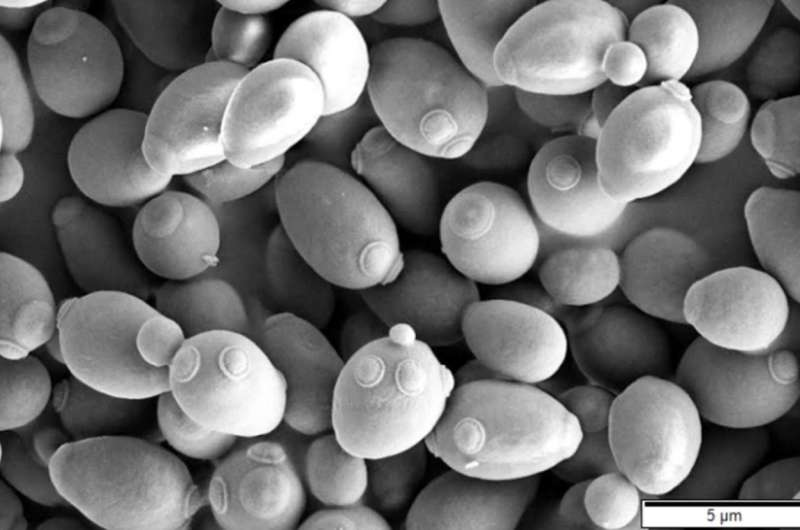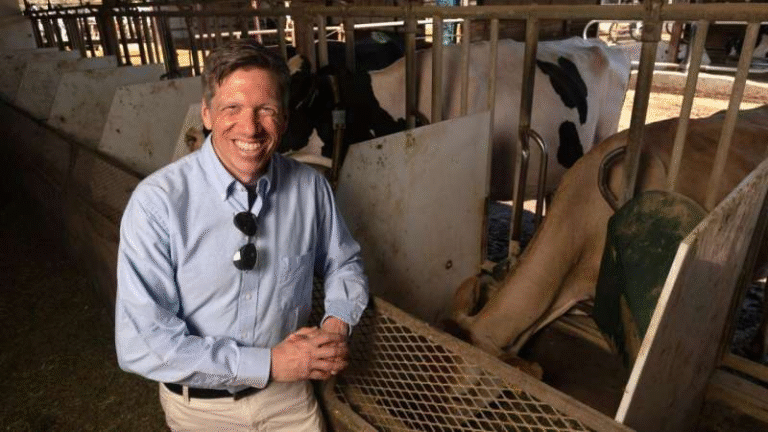Cross-Organelle Coordination in Yeast Boosts Production of Valuable Plant Compounds

A team of researchers from the University of California San Diego (UC San Diego) has developed a new way to make yeast cells far more efficient at producing plant-based compounds that are typically difficult to manufacture outside of plants. The findings, published in Science Advances, present a major step forward in synthetic biology and metabolic engineering, opening new possibilities for sustainable production of compounds used in medicine, agriculture, fragrances, and natural pest control.
The Goal: Turning Yeast Into Mini Factories
The study focuses on the common yeast species Saccharomyces cerevisiae, one of the most studied microorganisms in biotechnology. Yeast has long been used as a host for producing plant-derived chemicals, but there’s been a major challenge — plant enzymes, especially a group called cytochrome P450s (CYPs), don’t function efficiently in yeast.
These cytochrome P450 enzymes are essential for many plant metabolic pathways that create compounds used for plant defense, stress resistance, and pollinator attraction. They also produce molecules that have uses in drugs, flavors, and fragrances. However, when scientists try to express these enzymes in yeast, they often fail to work properly because yeast and plant cells have very different internal architectures and membrane systems.
To overcome this, the UC San Diego team — led by Yanran Li and Shanhui Xu from the Jacobs School of Engineering — explored how to restructure yeast’s cellular organization so that it could better support plant enzyme activity.
The Discovery: A Plant Protein That Changes Everything
The breakthrough came from studying a plant membrane scaffold protein known as AtMSBP1, originally found in Arabidopsis thaliana. When the researchers introduced this protein into yeast, something remarkable happened: it reorganized the internal structure of the yeast cell in ways that made it much more suitable for housing plant enzymes.
By expressing AtMSBP1, the yeast underwent major structural changes:
- The endoplasmic reticulum (ER) expanded into a more tubular network, increasing the surface area where enzymes like CYPs are anchored.
- The mitochondria — yeast’s energy centers — showed a significant increase in volume, providing more power and co-factors for enzyme reactions.
- The vacuoles, which act like recycling centers, underwent fission, splitting into smaller units that improved intracellular organization.
These changes created a more dynamic and coordinated cellular environment, allowing the plant enzymes to perform their complex chemical transformations more efficiently.
Cross-Organelle Coordination: The Key to Success
The most fascinating part of the discovery is what the team calls cross-organelle coordination — the improved cooperation and communication between different cellular compartments. Instead of tweaking a single organelle, such as the ER, the yeast’s entire internal system was modified to function in sync.
Even more surprising was the fact that this beneficial cellular rearrangement continued to support enzyme activity even after AtMSBP1 was no longer present. This means that the structural changes were stable and self-sustaining, a very promising feature for industrial use, where consistency is crucial.
This insight provides a blueprint for future metabolic engineering projects: instead of focusing narrowly on individual enzymes, scientists can now consider strategies that tune the overall cellular environment to optimize performance.
Why Cytochrome P450s Matter So Much
Cytochrome P450 enzymes are molecular powerhouses responsible for producing a wide range of natural products. In plants, they catalyze complex reactions that create molecules with antimicrobial, antioxidant, or signaling properties.
For humans, these same enzymes are critical because many pharmaceuticals, such as cancer drugs and hormones, rely on P450-mediated chemistry during their synthesis. In nature, P450s help plants fight disease, deter pests, attract pollinators, and survive environmental stress like drought or heat.
However, reproducing these enzyme systems in yeast or bacteria has always been a major hurdle. That’s because P450 enzymes are membrane-bound and require a delicate balance of cofactors, electron donors, and proper organelle localization. Yeast, while eukaryotic like plants, lacks the same internal organization — until now.
What This Means for Biotechnology
The implications of this study go beyond academic curiosity. If yeast cells can be engineered to maintain this cross-organelle balance, they could become powerful biofactories for producing rare or expensive plant-derived compounds.
Instead of harvesting plants that grow slowly or in limited regions, scientists could produce valuable compounds like artemisinin (anti-malarial), paclitaxel (anti-cancer), or plant-based fragrances and flavors inside fermentation tanks. This would make production more sustainable, scalable, and cost-effective.
Moreover, the research offers a paradigm shift for synthetic biology: it shows that improving a cell’s productivity doesn’t always mean changing the DNA sequences of individual enzymes. Sometimes, the key lies in how organelles interact, share energy, and exchange metabolites.
How the Study Was Conducted
To test their idea, the researchers expressed AtMSBP1 in yeast and observed its effects on cell structure using advanced imaging techniques such as 3D confocal fluorescence microscopy. They measured changes in the shapes and volumes of the ER, mitochondria, and vacuoles.
Next, they introduced plant cytochrome P450 enzymes into both normal and modified yeast cells. The results were clear — enzyme activity was much higher in the yeast cells that had undergone organelle remodeling.
Interestingly, the yeast continued to perform better even when AtMSBP1 was no longer expressed, suggesting that the structural improvements persisted over time.
The research was supported by the National Institutes of Health (NIH) under grants DP2-AT011445 and R35 ES031707.
Broader Impact and Future Directions
The findings suggest that cross-organelle engineering could become a new focus area for synthetic biology. By reshaping how organelles work together, researchers could enhance not only plant enzyme activity but also improve production of pharmaceuticals, biofuels, and specialty chemicals.
Future research will likely explore how to:
- Apply this strategy to multiple P450 enzymes working together in a pathway.
- Fine-tune the degree of organelle interaction for different types of compounds.
- Ensure the engineered cells remain stable and efficient in industrial-scale bioreactors.
If successful, this could lead to a generation of next-level yeast strains capable of producing complex natural compounds that were once thought to be beyond microbial reach.
A Quick Primer on Yeast Biotechnology
For those unfamiliar, Saccharomyces cerevisiae is the same yeast used in baking and brewing, but in science, it’s also a model organism for studying genetics and metabolism. Over the years, yeast has become a workhorse for biomanufacturing, producing everything from insulin and vaccines to bioethanol and vitamins.
What makes yeast special is that it’s a eukaryote — meaning it has organelles like plants and animals — yet it’s simple and easy to grow in labs. This makes it ideal for introducing plant genes and testing new metabolic pathways.
However, yeast’s organelles often don’t naturally support complex plant enzymes, which is why this UC San Diego breakthrough is so exciting. It effectively bridges the gap between plant and yeast metabolism, giving scientists a new tool to unlock thousands of bioactive molecules.
The Bigger Picture
This research is part of a growing trend toward cellular-level redesign — where the focus shifts from editing genes to reprogramming how cells are organized internally. It’s a move from genetic engineering to cellular architecture engineering.
As global industries look for greener and more efficient ways to produce everything from medicines to materials, approaches like this could redefine how we build biological production systems. Yeast may no longer just be a tool for brewing beer — it could become a cornerstone of the bio-based economy.
Research Reference:
Enhancing Cross-Organelle Coordination to Advance Plant Cytochrome P450 in Yeast – Science Advances (2025)





